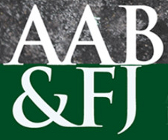Abstract
This study provides an overview of corruption in Timor-Leste. The extent of corruption in the government and public service. This paper asks: who are the stakeholders? How can they work together? How do these actors manage or fail to manage corruption? More broadly, which successful collaboration mechanisms can be identified from the literature about how to reduce corruption? To provide an answer, in this paper, the literature on an overview of Timor-Leste (TL) corruption is extensively reviewed, with a focus on five particular sectors: an overview of corruption in Timor Leste, primary drivers of corruption, corruption in crucial sectors, legal and institutional framework, other stakeholders, lesson learned from Developed Countries. The paper gives solutions include the nine broad areas of corruption risk mapping, subsidy registers and sunset clauses, transparency initiatives, anti-corruption laws, shared-ownership models between fragile developing countries, partnership with developed countries as continues learning and improvement, national and local culture sensibilities, international connectivity of public corruption perception index, and invested in human capital development.
Keywords: Corruption, Transparency, Governance, Fragile and developing countries, developed countries.
How to Cite:
da Costa Oliveira, P., Basuki, B. & Hamidah, H., (2023) “Transparency in International Anti-Corruption Helpdesk Answers: A Case Study in Timor-Leste”, Australasian Accounting, Business and Finance Journal 17(4), 204-222. doi: https://doi.org/10.14453/aabfj.v17i4.13
Downloads:
Download PDF
795 Views
704 Downloads

